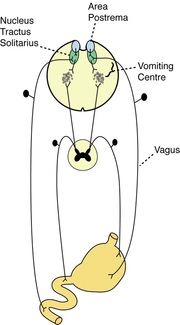Emesis Models
|
Nausea and emesis during drug treatment or disease can be debilitating and can severely impact the quality of life.
VomiFix is committed to both understanding the mechanisms involved in emesis control, and evaluating potential therapies. We have a proven track record in translational research. It is of major interest to know if a compound has side effects of nausea and emesis, or has anti-emetic properties. Such studies are most often conducted using ferrets. This ferret model is considered the gold standard for these purposes. To asses emetic liability is relatively straightforward. Test compounds may be administered via any route (central, or peripheral) in normal animals, or in animals surgically prepared with radiotelemetry implants for simultaneously acquiring biopotential data (e.g. blood pressure, heart rate, temperature and EGG). Behavioural assessment including episodes of retching and emesis can be collected and quantified. This is usually done in an acute experimental setting, although chronic administration protocols are also performed. To assess the anti-emetic potential of a compound is also relatively straightforward and is tailored to the specific interest of the client. Usually, the cisplatin-induced acute and delayed emesis model using the ferret is used where experiments last for up to 4 days and the test compound is administered at regular 8-12 h intervals. Again, this could be done in normal animals or in those implanted with radiotelemetry devices We assess the potential of a drug to induce nausea by inspection of behavioural and radiotelemetric data and by examining c-fos expression in brainstem and forebrain areas involved in emesis control. We also quantify drug action on food and water consumption during emesis experiments as a non-specific measure of nausea. Ferrets do not become motion-sick, so to evaluate the anti-emetic properties of compounds developed for treating motion sickness another animal model is used, the house musk shrew (Suncus murinus). This animal exhibits emesis when subjected to horizontal motion. |
Top Photo: The ferret is used in most studies, especially cisplatin-induced
acute and delayed experiments. Bottom Photo: House musk shrew (Suncus murinus) can be used in any experiment but it is most commonly used in motion sickness paradigms. |
Current Interests and Opportunities
For further information about these models’ usefulness for your particular research needs, contact us at: info@VomiFix.com
|

